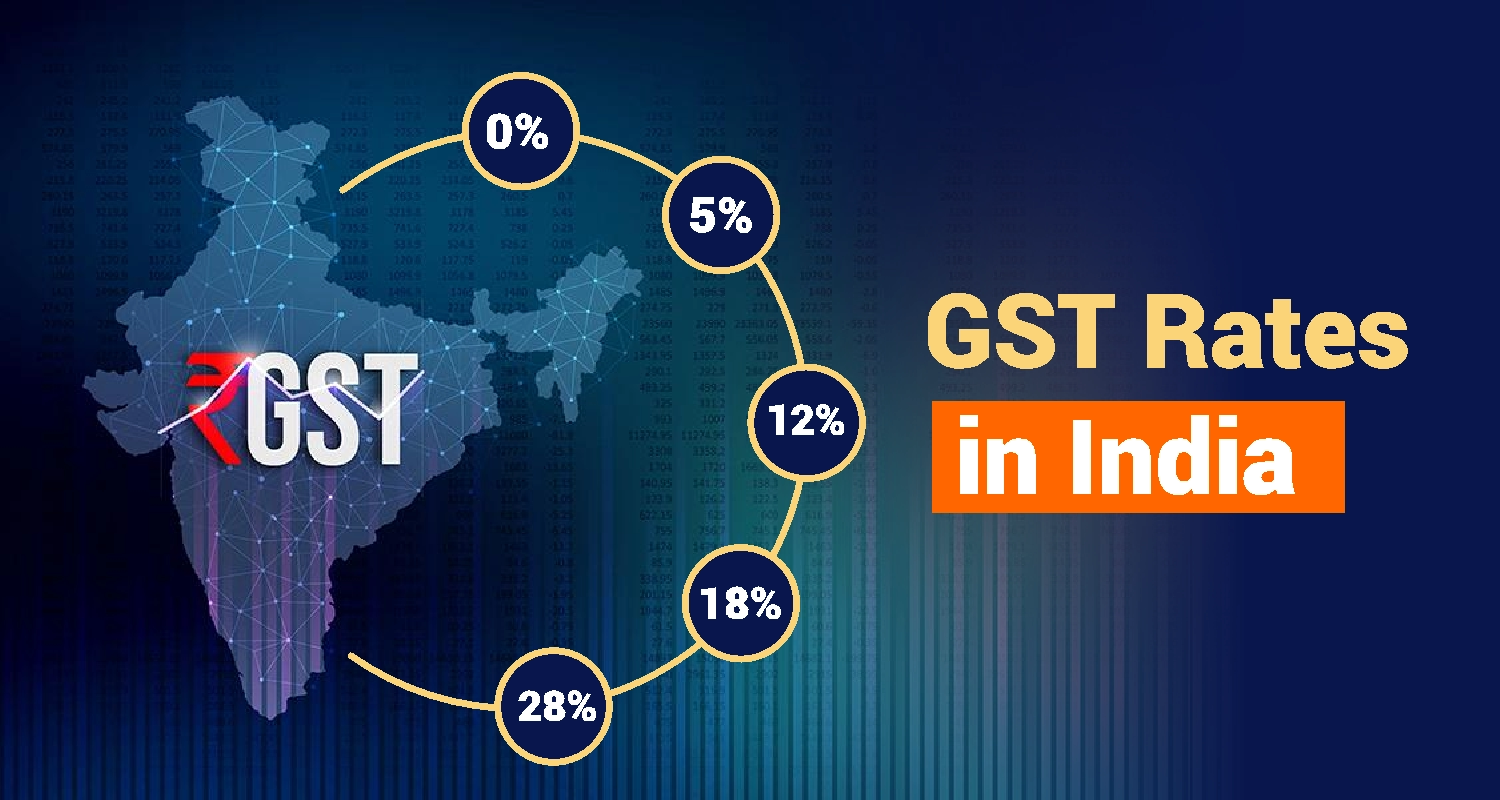GST Rates in India 2025 – Complete List & Updates

Goods and Services Tax (GST) rates are vital for every Indian business and consumer. Changes in GST rates can significantly affect various industries and the economy as a whole. Understanding the latest GST rates is essential for seamless transactions, whether you are a trader, consumer, or service provider.
Understanding GST Rates
GST rates represent the percentage of tax imposed on the sale of goods and services under the CGST, SGST, and IGST Acts. For instance, if a product has a taxable value of ₹10,000 and a GST rate of 12%, the GST charged would be ₹1,200.
GST Rate Structure in India 2025
The GST slab rates structure is primarily categorised into five main GST slabs:
- 0% GST: Essential goods like fresh fruits, vegetables, milk, and educational services.
- 5% GST: Basic household items such as sugar, spices, edible oils, and dining at small restaurants.
- 12% GST: Processed foods, textiles, and mobile phones.
- 18% GST: Most goods and services, including electronics, restaurants (with AC), and financial services.
- 28% GST: Luxury items such as cars, high-end motorcycles, and aerated drinks.
Check out the slab rates below:
|
Category |
Old GST Rates |
New GST Rates |
|
Scrap and polyurethanes |
5% |
18% |
|
Pens |
12% |
18% |
|
Metal Concentrates and Ores |
5% |
18% |
|
Recorded media reproduction and print |
12% |
18% |
|
Packing containers and boxes |
12% |
18% |
|
Certain Renewable Energy Services |
5% |
12% |
|
Broadcasting, sound recordings, and licensing |
12% |
18% |
|
Printed materials |
12% |
18% |
|
Railways Goods and Parts under Chapter 86 |
12% |
18% |
Sapna aapka. Business Loan Humara.
Apply NowHow GST Rates are Decided?
GST rates are determined by the GST Council, which considers various factors, including the nature of goods and services, their impact on the economy, and the need for revenue generation. Regular reviews and revisions ensure that GST rates align with current economic conditions.
Impact of GST Rates on Different Sectors
Different sectors experience varying levels of impact due to GST percentage in India. For example:
- Agriculture: Lower rates on essential goods help keep prices affordable.
- Manufacturing: Higher rates can increase production costs, affecting pricing.
- Service Industries: The applicable GST rates influence services like hospitality and banking.
TDS under GST & TCS under GST
- TDS under GST (Tax Deducted at Source): Applicable to specified transactions, where a buyer deducts a tax percentage before making payments to the supplier. It primarily applies to government entities and large corporations.
- TCS under GST (Tax Collected at Source): Applicable to e-commerce operators collecting tax from sellers on their platform. It ensures better tax compliance and transaction tracking.
Common GST Rate Misconceptions
Many misconceptions surround GST rates. A common belief is that higher GST rates always result in higher consumer prices. However, the actual impact can vary due to market conditions and competition, which may absorb some of the tax increases.
Additionally, some individuals assume that all goods are taxed uniformly, but this is not the case. GST rates differ significantly based on the classification of goods and services, with essential items often taxed at lower rates and luxury goods facing higher rates. Understanding this nuance is crucial for consumers.
How to Check GST Rates for Products and Services?
Consumers and businesses can check the new GST rate list by searching various HSN codes, SAC codes, and GST rate finders. These tools provide up-to-date information and help identify the correct GST applicable to specific products or services.
Conclusion
Understanding GST rates, GST tax slabs, and the GST law is crucial for effective financial planning and compliance. With the recent updates from the GST Council, staying informed helps businesses and consumers navigate the tax landscape efficiently while ensuring adherence to the latest regulations.
FAQs
Q1. What is the GST rate for essential goods?
Ans. Essential goods, such as fresh fruits, vegetables, and educational services, are typically taxed at a 0% GST rate, ensuring consumer affordability and supporting basic needs.
Q2. How often are GST rates revised?
Ans. GST rates are revised during GST Council meetings, which are held periodically throughout the year. These revisions reflect changes in economic conditions and aim to optimise tax structures.
Q3. Can GST rates vary for interstate transactions?
Ans. Yes, for interstate transactions, GST rates are governed by IGST, which combines both CGST and SGST rates. This structure ensures proper tax distribution between central and state governments.
Sapna aapka. Business Loan Humara.
Apply NowDisclaimer : The information in this blog is for general purposes only and may change without notice. It does not constitute legal, tax, or financial advice. Readers should seek professional guidance and make decisions at their own discretion. IIFL Finance is not liable for any reliance on this content. Read more



